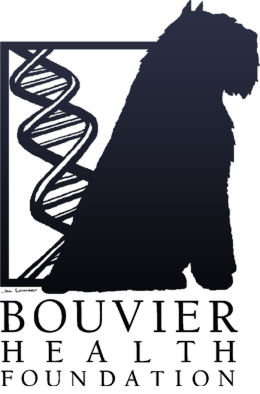What does it Mean – How Is It Calculated
Published in the Summer 2008 Dirty Beards Quarterly, Volume 18, Number 2
There Is A Very Good Reason Why Individuals May Mean Something Slightly Different When Using The Word “Inbreeding”
Everyone understands that inbreeding refers to the mating of related dogs. However, an exact delineation of when that relatedness changes from out-crossing to line-breeding, and when line-breeding becomes inbreeding, is not defined the same by all breeders. The two-paragraph discussion of the definition of inbreeding that follows is from the book Genetics of the Dog† by Malcolm B. Willis and serves to explain why this variation of understanding exists.
“The correct definition of inbreeding is mating together of animals more closely related to one another than the average relationship within the population (or breed). As can be seen this is a definition expressed in relative terms and thus it can be argued that inbreeding is not necessarily the same thing in each breed or population within a breed. If, as seems likely, different countries vary in the average relationship to be found between dogs of a specific breed then inbreeding will not be defined alike in each area.
“The reason why ‘more closely related to one another than the average’ has to be included in the definition is obvious if one pauses to think about a pedigree. We begin with two parents then move to four grandparents and eight great grandparents. Each generation the number of ancestors is doubled. By the time generation twenty is reached there will be 1,048,576 animals in the generation and in most, if not all of our breeds there simply were not that many animals in existence twenty generations ago. There must, therefore, have been some duplication of ancestors”.
Thus, for there to be a meaningful discussion comparing “inbreeding” among differing pedigrees, a more quantitative measurement is required. A mathematical equation to describe the inbreeding relatedness, called the coefficient of inbreeding (COI), exists. It is:
Fx = Sum[(½)n1 + n2 + 1(1 + FA)]
where Fx is the COI. This mathematical formula is too complex to be of much practical use to most breeders. Fortunately Willis devised a more easily followed, if less precise, method to calculate the COI of an animal. A description of how to use his method can be found in his book. Anyone interested in an article describing Willis’s method can contact me at ellen@bouvierhealthfoundation.org.
There are numerous software programs that will calculate the coefficient of inbreeding (COI). One is K9-Ped, found at: http://www.k9ped.com Another is The Breeder’s Standard: http://www.mbfs.com/tbsdesc.asp
The reason that a numerical COI is critical is that it provides a definition of the relatedness in an animal’s pedigree that is unequivocal. While individuals may reasonably disagree on the advisability of breeding or owning animals with a certain COI a numerical definition allows individuals to share the same understanding of the relatedness without ambiguity.
The goal of consciously choosing to inbreed, is to “double up”, that is achieve homozygosity, in the genes responsible for desirable traits. But, as Willis states, do not forget:
“Unfortunately having the same gene duplicated does not mean that the best gene will be duplicated. When we inbreed to a certain dog we are increasing the chance of getting duplicate (desirable) genes of that dog in the litter but these genes can just as easily be undesirable.”
INBREEDING MUST BE COMBINED WITH CAREFUL SELECTION IN ORDER TO RESULT IN INCREASING THE PREDICTABILITY OF INHERITING A SPECIFIC, POSITIVE TRAIT.
Anyone interested in learning the COI of their Bouvier or of a proposed litter, as well as the percentage contribution of the individual ancestors, (using The Breeder “s Standard software) may contact the BHF at ellen@bouvierhealthfoundation.org.
† Willis, M.B. 1989. Genetics of the Dog. 1st ed. Macmillian Publishing Company, NY. ISBN 0-87605-551-X.
